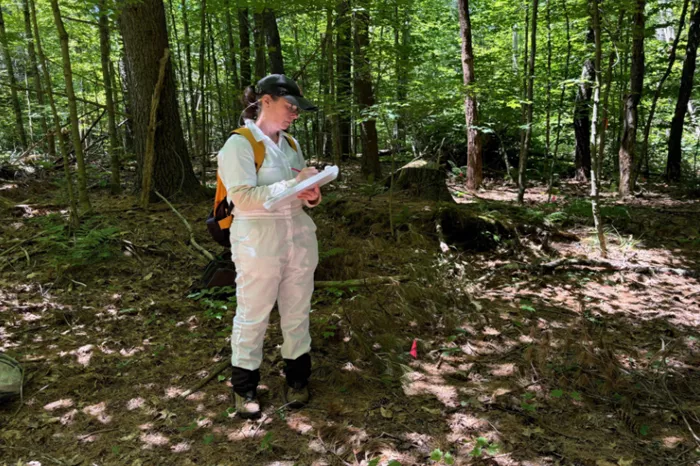Scientists Investigate Tick Management Through Invasive Plant Control.
As blacklegged tick season reaches its peak this fall, scientists in Vermont and Maine are studying the link between invasive plants and tick populations. Research has consistently shown that certain invasive species, such as Japanese barberry, bush honeysuckles, and common buckthorn, harbor more ticks than native plants.
With a $1.8 million grant from the National Science Foundation, researchers aim to understand how managing these invasive plants can reduce tick numbers and lower the risk of tick-borne illnesses in humans. Allie Gardner, a medical entomologist at the University of Maine and the project’s lead researcher, emphasized the importance of translating research findings into actionable recommendations for landowners.
Gardner stated, “We can do all the ecological research we want on the problem, but if we are not able to translate our findings into recommendations, ultimately we are not going to make any headway.”
The exact reason ticks prefer invasive species over native plants is not fully understood. However, researchers have several theories. Kristen Ross, a restoration ecologist at Vermont State University and a project collaborator, noted that the humidity around Japanese barberry is ideal for ticks. “They like it not too rainy and not too dry,” she explained.
Additionally, dense thickets of barberry provide shelter for mice, a primary host for blacklegged ticks. Gardner added that these thick infestations make it difficult for natural predators of mice to reach them.
While the researchers are optimistic about their findings, they caution that simply removing barberry or honeysuckle will not completely eliminate ticks. Bill Landesman, an ecologist studying blacklegged ticks at Vermont State University, posed the question: “How much of a reduction does there need to be before you see a reduced risk [of disease]?”
Over the next five years, the team will collect data from private and public land in Maine’s Penobscot County and Vermont’s Rutland County. Their goal is to train landowners in best practices for managing ticks and invasive species. Gardner hopes that their findings will extend beyond this project.
“We know that there’s an intense dislike of invasive plants, and, similarly, of ticks,” she said. “We’re looking for win-wins.”
Related topics:
- Checking for Signs of Drought Stress in Trees and Plants
- Essential Gardening Tasks for a Bountiful Lavender Bloom Next Year
- AI-Powered Garden Expressing Its Feelings Set for Chelsea Flower Show


